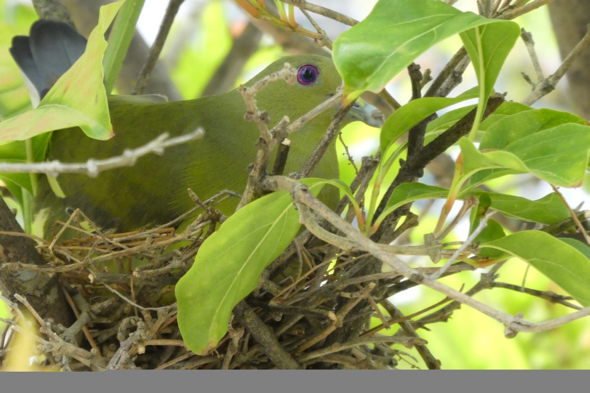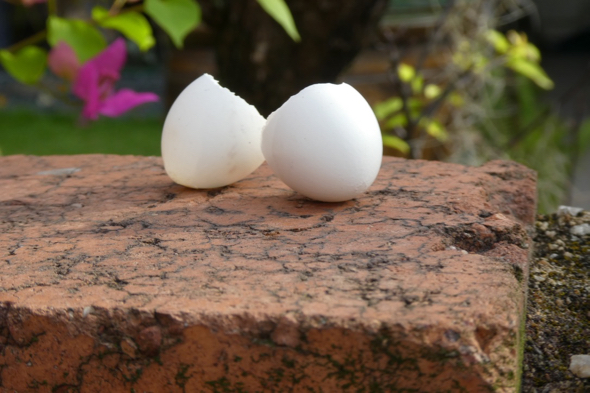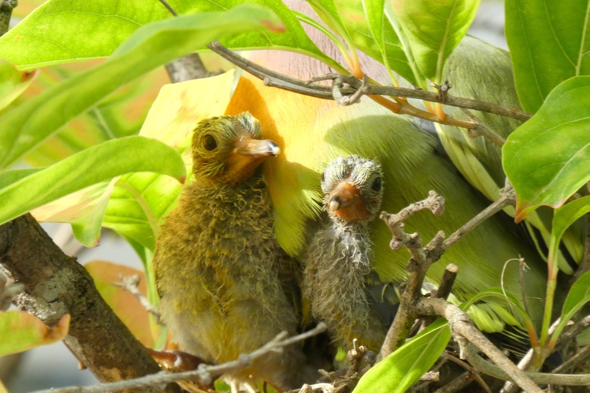
“In late February 2018, a pair of Pink-necked Green-pigeons (Treron vernans) started building their nest in the Fiddlewood (Citharexylum spinosum) roadside tree right in front of my house in Serangoon Gardens. They took turns sitting in the nest for about 2 weeks till the eggs hatched. The shells were found under the tree on 15th March.

“The parent birds continued to take turns baby-sitting. The father bird was seen much more frequently sitting over the nest. Finally, after another 1-2 days, the babies, with eyes still closed, became active. Each had a distinct white spot at the tip of its beak, the egg tooth that helps the baby bird to make a hole in the egg shell from inside the egg. The baby bird then splits the egg shell and emerges,

“Again, it was the vividly coloured father bird who was seen in the mornings, snuggling the young. Sometimes the babies were left alone in the nest, sleeping or moving around. The parents would be seen high up on a neighbouring yellow-flowered acacia tree.

“By 22nd March the babies’ eyes were fully opened. Father bird was seen fussing around them, regurgitating food for the fast-growing juveniles. The parent’s sometimes half-closed eyes evoked doting and loving expressions!

“Within just 2 days, curly, white wiry feathers began to give way to adult black, grey, yellow and green feathers.
“By 24th March, they were almost half the size of the parents, but still snuggling under the breast, sides and tail of the parent. The siblings could be seen facing one another, bobbing up and down, swinging their heads from side to side. The oldest of the two chicks was flapping its wings vigorously (see videos above, below).
“It was about time for the older of the siblings to fledge, and fledge it did (below).
“The fledgling ended in my neighbour’s driveway, too weak to fly. The adult was around, calling. Later the fledgling managed to fly to the nearby tree to join the father bird.”
Joyce S. Y. Tan
Singapore
24 March 2018










3 Responses
Thank you, Joyce S. Y. Tan. Very interesting.
Thank you Joyce. Lovely to see them up close.
Thank you so much for sharing this! ” )